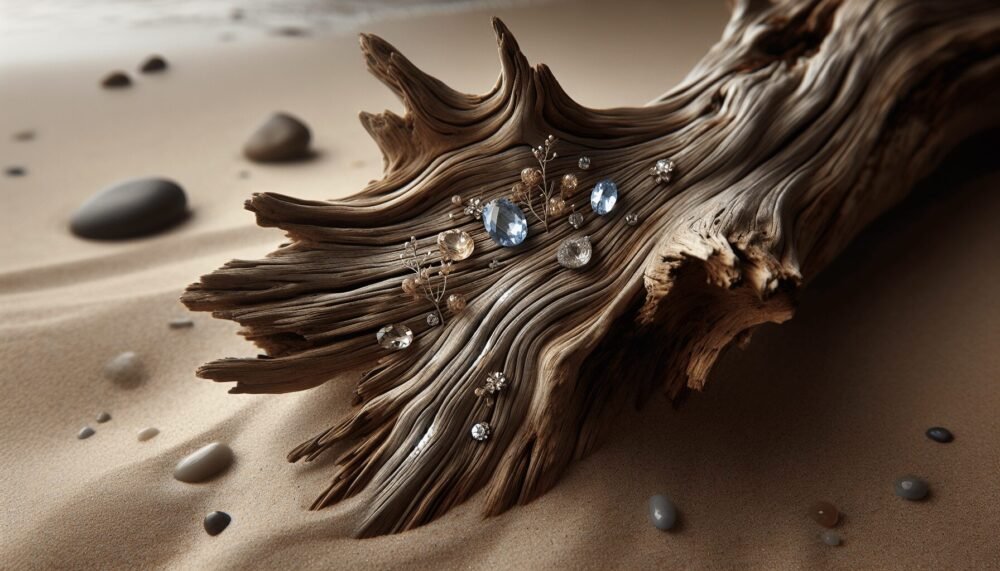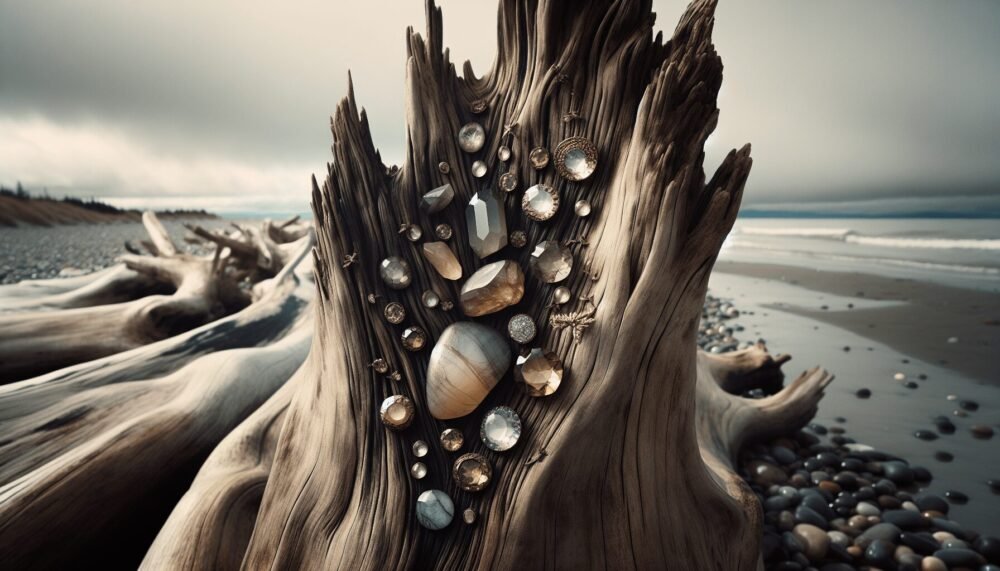Have you ever thought about how you can bring a piece of nature into your home with a personal touch? Driftwood heart wreaths might be the perfect answer. These beautiful creations not only add a rustic charm to your living space but also carry with them a unique story shaped by nature’s elements. Today, you’re about to embark on a journey where you’ll learn everything there is to know about crafting your own driftwood heart wreath.

Understanding Driftwood
Before jumping into the creation process, it’s essential to understand what driftwood is and why it’s so special. Driftwood refers to the pieces of wood that have been washed onto the shore by the action of winds, tides, or waves. Each piece of driftwood is thoroughly sculpted by water, offering a smooth and unique texture that is perfect for crafting.
The Appeal of Driftwood
Why is driftwood so cherished in art and decor? You might wonder. Driftwood presents an organic and rustic aesthetic. Its naturally weathered appearance adds a sense of tranquility and natural beauty. By incorporating driftwood into your homemade wreath, you’re introducing elements of the earth, water, and time into your personal space.
Where to Find Driftwood
Locating driftwood for your project can be part of the adventure. Generally, beaches along the coastlines are the primary source. Look for secluded beaches with minimal human activity to maximize your chances of finding high-quality pieces. Do remember to check regional regulations, as collecting driftwood might be restricted in some areas.
Essential Tools and Materials
Before beginning your project, you’ll need some essential supplies and tools. This section will guide you through everything you need to create a driftwood heart wreath.
Materials Needed
To craft your wreath, gather the following materials:
- Assorted pieces of driftwood
- A heart-shaped wreath frame
- Strong adhesive or wood glue
- Hemp or jute twine
- Optional: Seashells, sea glass, or other coastal embellishments
Tools You’ll Use
Equally important are the right tools which will help streamline the crafting process:
- A glue gun
- Scissors
- Sandpaper
- A small saw (for trimming driftwood pieces)
- Wire cutters
Preparing Your Driftwood
Preparation is key in ensuring your wreath not only looks beautiful but is also sturdy and long-lasting. Follow these steps to prepare your driftwood effectively.
Cleaning Your Driftwood
Begin by giving each piece of driftwood a thorough cleanse. Soak the pieces in clean water to remove salt and debris. After soaking, scrub them with a brush to eliminate any remaining dirt or algae.
Drying Driftwood
Once washed, allow your driftwood to dry completely. Place them in a sunny spot for at least a week. This drying process helps in preventing mildew and ensures they bond well with glue.
Shaping and Sanding
With your driftwood clean and dry, it’s time for some minor shaping. Use sandpaper to smooth out any rough edges and a small saw to trim pieces to the desired size. Ensure that the driftwood is manageable in size and complements the heart-shaped frame.
Crafting the Driftwood Heart Wreath
Now, it’s time to bring the vision to life. Follow these steps to put together your wreath effortlessly.
Building the Base
Start by laying out your heart-shaped frame. First, pick one piece of driftwood and decide where it will sit on the frame. Secure it with hot glue, pressing firmly to ensure a strong bond. Continue to attach the remaining pieces until you see the outline of a heart shape.
Layering and Designing
Next, layer additional driftwood pieces to build depth and texture. Think of them as the intricate details that make your wreath unique. Use a small amount of wood glue or hot glue to adhere these pieces, careful not to overlap excessively.
Adding Personal Touches
This is the fun part where your personality shines through. Embellish your wreath with items like seashells or sea glass. Secure these using glue, ensuring they complement rather than overpower the driftwood’s natural beauty.

Caring for Your Driftwood Heart Wreath
A little regular maintenance will keep your wreath looking fresh for years to come. Here’s how you can care for your creation.
Protection from the Elements
If you plan to hang your wreath outdoors, consider applying a sealant to protect against weather changes. This will help preserve its color and texture against sun and rain.
Dusting and Cleaning
For indoor display, occasionally dust your wreath using a duster or soft cloth. Should it require deeper cleaning, a gentle wipe with a slightly damp cloth should suffice.
Creative Variations and Themes
Flex your creative muscles by exploring different themes and variations for your driftwood heart wreath.
Theme Ideas
Think of different themes such as a beach getaway, nautical journey, or a serene forest retreat. You can incorporate elements like fishing nets for a nautical style or pinecones for a woodland look.
Seasonal Wreaths
Why not tailor your wreath to suit different seasons? Adding dried flowers for spring, vibrant leaves for autumn, or small ornaments for a festive touch can keep your wreath evolving with time.
Inspiration and Community
Remember that you are not alone on this creative journey. There is a vibrant community enthusiastic about driftwood crafts that you can join.
Online Communities and Forums
Consider joining online crafting groups and forums. These platforms are excellent for exchanging ideas, getting feedback, and finding new inspiration.
Crafting Workshops
Seek out local workshops and classes focusing on driftwood art. Not only will you refine your skills, but you’ll also meet like-minded individuals who share your passion.
The Joy of Crafting
In making a driftwood heart wreath, you’re doing more than just assembling pieces of wood. You’re shaping memories, creating a piece of decor with personal significance, and maybe even discovering a new passion. Enjoy the process as much as the end product, and you’ll find great satisfaction in the world of crafting.
Driftwood heart wreaths are beautiful, simple to make, and can become your next favorite hobby! These projects are a wonderful blend of creativity and nature, using materials that hold the stories of the winds and waves that brought them to you. Now it’s your turn to transform these natural treasures into something memorable and uniquely yours.


















